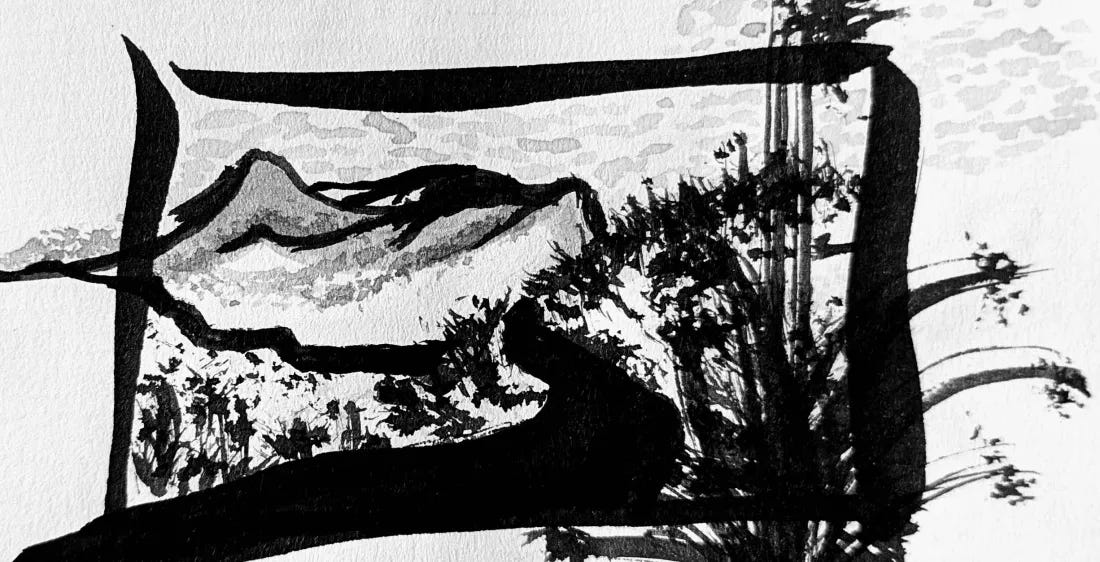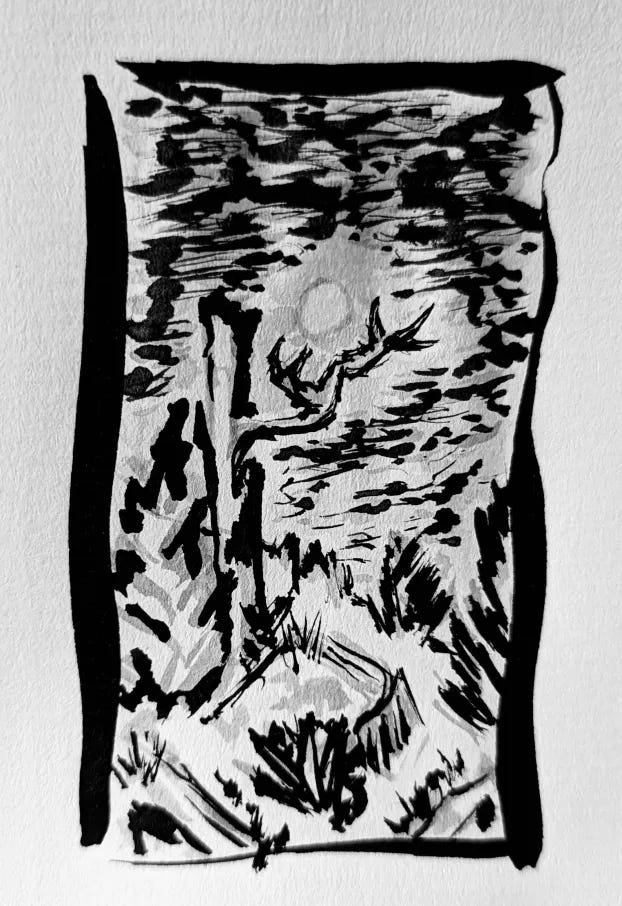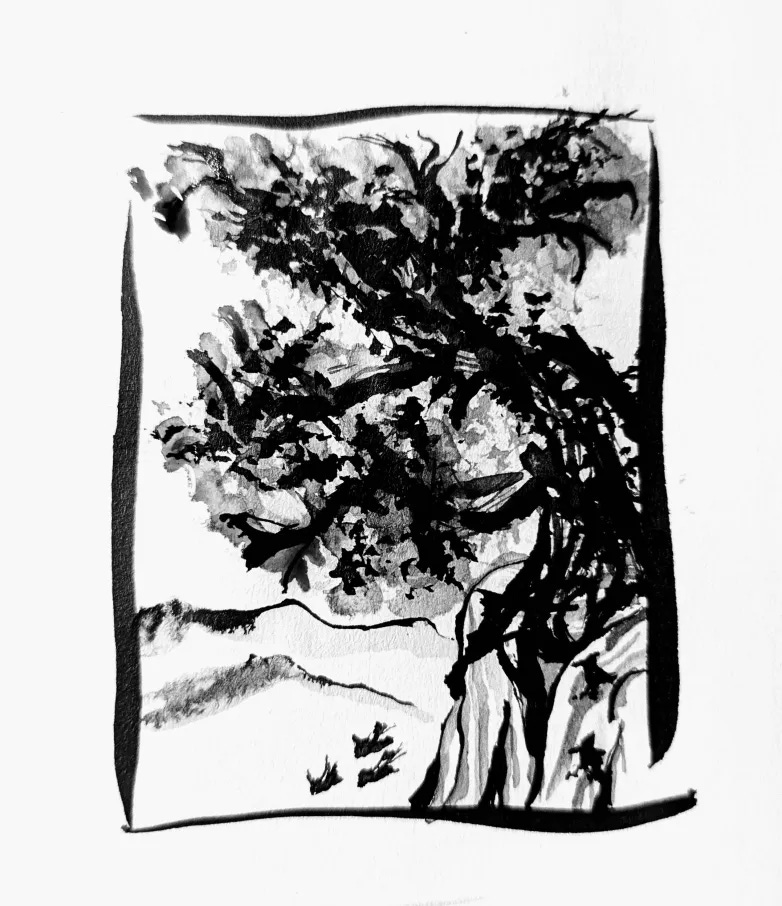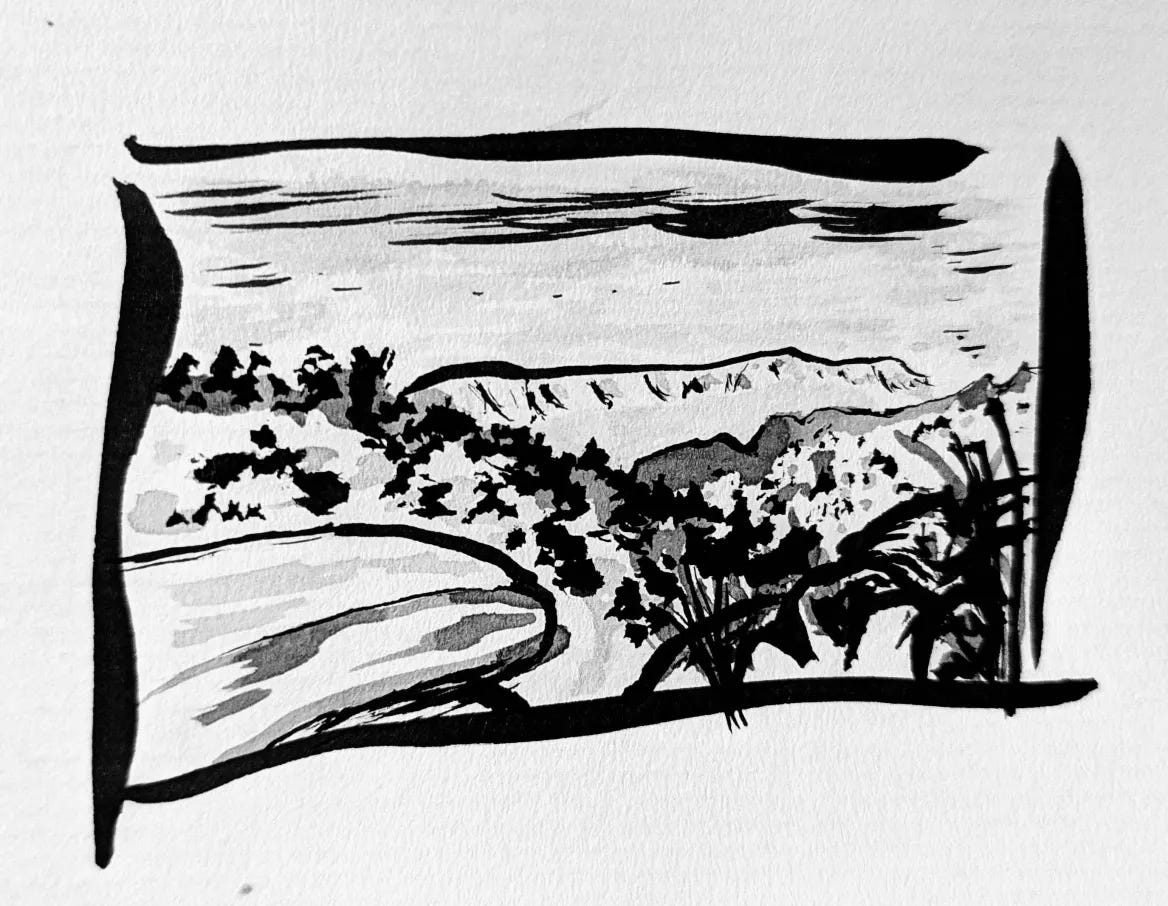Cold mornings are the natural antidote to even your most infectious plans from the night before. The alarm bell chimes and your warm, cozy blankets smother any residual enthusiasm.
Cold mornings bring to mind forgetting to defrost the car before its time to leave for work, or those eleven days I spent living in a cave dug in to a snow bank on the shoulder of a mountain in South America, or the countless times that I’ve woken up in my own bed to pain and partial numbness in my contorted hands — the poor things get left above the covers and my body, in its short-sighted reflexiveness, tucks them under itself like a mama bird.
But those same cold mornings that tempt me to burrow deeper into my blankets also bring to mind alpine starts, those romantic, effortful endeavors of the most dedicated outdoorsfolk.
. . .
I first heard the term alpine start when I was learning the basics of mountaineering sixteen-or-so years ago. The typical mountain that requires a technical ascent is inhospitable in its upper reaches, with lethal storms and no flat ground on which to safely establish camp. This means that summit day often entails a lengthy approach hemmed in by a narrow weather window. It's not unusual for the compromise to result in a 4 a.m. start on summit day, or even earlier.
I haven’t done any technical climbing in years, but the alpine start has persisted as a regular routine in my nature connection practice. When I get deep beyond the trailhead before sunrise, I plug in to a side of nature that I might not otherwise know exists.
Take the alpine start out of the alpine zone and you have the perfect tool for consistently facilitating wildlife encounters.
Everyone dreams of crossing paths with megafauna, but this type of encounter is typically unpredictable outside the most rugged reaches of our world (Alaska, one day you and I shall meet). The dawn chorus, on the other hand, can be counted upon basically every day whether you’re in an urban core, some rural hinterland, or a remote wilderness. The simple majesty of the dawn chorus easily offsets the discomfort of the alpine start.
From roughly thirty minutes before until thirty minutes after sunrise, every day, the birds of your neighborhood dutifully rise early to call the new day into being. Bonus, the dawn chorus isn’t just about the birds for which it is named. Dawn signals the changing of the guard. Any nocturnal creatures that worked late will be returning home, and many of the critters who are awake but elusive during the day will be moving about less furtively, full of boldness.
With so many animals opting out of sleeping late, the eager wildlife watcher would be foolish to do so themselves.
. . .
I took a road trip to Colorado this past September, and along the way I did a different sort of opting out. Instead of sleeping in hotels or even campgrounds, I just laid out my ground pad and blankets in the bed of my pickup truck when it came time to stop each night.
Each morning’s first priority was a sunrise hike and a meeting with the local choir. Morning-one was at Mingo National Wildlife Refuge in Missouri, then morning-two at Sand Hills State Park in Kansas. Each night I strategically ended the drive at the nearest Walmart. In the case of Mingo, that was an hour or so away, and in the case of Sand Hills, it was a much snappier ten minutes.

Perhaps it was due to a mild anxiety brought on by the feeling of exposure (sleeping in a Walmart parking lot seems like it exposes you to some weird tail-risks that a hotel wouldn’t) or perhaps it was something to do with the open sky overhead, but I awoke easily before the sun each morning, a few steps ahead of my alarm. By the third night out from East Tennessee, I had reached Colorado and the freedom of dispersed camping on BLM lands. Walmart parking lots were a thing of the past!
It was already well past sunset when I turned up the steep dirt access road to Oil Well Flats, just north of Canyon City, CO. The few ruts were easily traversed and I kept my fingers crossed as I continued to pass occupied campsites. I really wanted a site higher up near the trailheads anyway, so I wasn’t sad that most folks were choosing to camp lower down, but I was worried that despite the remoteness of the location, all the sites would be taken.
Fortune graced me with her favor. The perfect campsite was open for me, one of the top-three choices I’d honed in on when I’d checked the map at the entrance kiosk. It would only be a two minute walk to the trailhead in the morning. I figured I couldn’t be any better set up for a proper alpine start on morning-three of my roadtrip.
I wasn’t wrong, but there was one small hiccup.
The early mornings in Missouri and Kansas had been crisp, cool, maybe even a little brisk, but the pre-dawn in Colorado was cold and no semantic flourish would make it feel otherwise. Maybe it was the drier air. Almost certainly it was the 4000 feet of elevation increase. But when my alarm went off two hours before sunrise, I was faced with the time honored struggle to extract myself from the inviting blankets and expose myself to the inhospitable cold.
Temptation got the better of me and I burrowed down into my blankets for “just thirty more minutes”.
Snooze completed, I leapt up and rushed to get dressed, fearing I had missed my chance to get on the trail while the night was still at its darkest. But there was no sign yet of the twilight’s inevitable arrival.
Once I was up and moving, I didn’t miss my warm blankets. I stretched myself up and out, eschewing the huddled posture of warmth conservation. I relished the envelopment of the cold dark. This was why I had come.
I hit the trail with my headlamp switched off, choosing to navigate the dull glow of the trail with the edges of my eyes. There were no clouds in the sky to stop the vast blackness of space from pouring itself down into the canyons like a dense fog. The cold pinpoints of the stars overhead seemed only barely out of reach of my outstretched fingertips and the full moon cast the terrain in a frozen sheen of light as it edged its way toward the western horizon.
I had gotten less than a mile down the trail before the morning gloaming began to add its light to my path. I had not expected it to come so far ahead of the sunrise, another high-desert idiosyncrasy.
As my eyes adjusted to seeing more than just the faint blur of trail underfoot and indistinct shadows all around, I found myself winding along a dry creekbed at the bottom of a v-shaped canyon. The slopes above me were covered in stubbly glades of twisted cedars, shrubby oaks, and thin, pale grasses, separated by countless outcrops of red and tan rock. Without the flow of water to obscure the edges and distort the depths, the boulders and gravel bars of the creek bed had the stark look of a well-preserved skeleton. The trail wove a helical path up along the creek channel, shouldered in close by the canyon slopes, intimately intertwining the creek, crossing and recrossing, leaping up onto jutting rock outcrops, then ducking beneath the boughs of cedars to cross yet again.
I was still ahead of the sunrise, but no longer short of light when the creek trail abruptly opened onto a narrow plateau fenced by rocky promontories. A proverbial fork in the trail presented the option to meander east into the short-grass highlands or turn sharply south to keep climbing and skirt along the contour of a west-facing bluff. I’m always a sucker for the high road, so I veered up and away from the intimate embrace of the creek trail.
. . .
The birds had my attention. They were cheering each other along through a tumbling routine in the rock outcropping perhaps fifty feet above and to my left.
The trail had wrapped around below a small, ragged bluff and was now heading back east. There were ever-higher heights to explore ahead, but the birds seemed to be calling my name. They were small, finches perhaps, or sparrows, some western species reminiscent of Tennessee cousins. I wondered if I could scramble up to their playground without evicting them.
I traveled an extra few hundred feet down the trail so I could backtrack and make an indirect course towards the rollicking party. The slope above the trail was rocky scree, almost completely devoid of soil. I had left behind the arid meadows below and entered into a harsh, stony land of cedar and lichen and thin, short, desiccated grasses. I had to pick my way carefully from cedar to cedar, counting on their roots to hold the slope together and hoping it’d also keep the sounds of my passage to a minimum. I didn’t want to stir up the birds I was stalking, and I always have a general aim of disturbing the land as little as possible as I pass through it.
The boulders that made up the top of the outcrop didn’t slip and slide underfoot like the scree below, though if they did it’d be catastrophic, as they’re big enough to take the whole slope along with them. Shaded hollows in the rocks hid ephemeral pools. It would appear that I had stumbled upon a mountain bird bath resort. They weren’t having just any old get together, but a pool party!
I could only keep my approach so subtle and the frolicking birds retreated to the ramparts of the cedars which jutted out over the void, well beyond the lip of the boulders. I continued my approach, slowly, crouching low and listening to the birds talk about me, covering spans of feet in minutes rather than seconds.
Someone sent the signal that the party was over. Perhaps it was the intrusion of the uninvited guest or perhaps it was just time to go, but without hesitation, the birds began leaping into the void, in pairs or groups or occasionally alone. I expected them to simply migrate along the face of the outcrop, seeking out some place I hadn’t yet spoiled, but they appeared to be through with this phase of their morning and instead soared into the open sky to the southwest, coasting effortlessly without a wingbeat.
In seconds they’d traversed high above the maze of gullies and ridges I’d been navigating for the past hour and a half. I watched through my binoculars until the specks disappeared into the long southern length of the valley below. I felt some small jealousy for their free and effortless flight but it was far outweighed by awe.
I honored their parting by settling into the outcrop they’d vacated. It wouldn’t do for me to have pushed them away only to climb back down and continue along the trail. This would be the place where I’d sit and cash in on the investment of my early rising.
I sat down to await the cresting of the sun over the highest ridge to the east. A small marmot crept out and sat upon a stony outcrop fifteen feet below me. Apparently he too intended to witness the sunrise from his private balcony.
I fixed my eyes upon the area just above the ridge where the brightest patch of sky told me the sun was due to rise. It became a meditative challenge: keep your eyes on target but relaxed, allow your thoughts to drift but not so much that they take you away from your body, listen as the world around you goes through its morning routine.
The leading arc of the blazing disc began to starkly silhouette the ridge.
Every little stone and shrub and blade of grass upon the crest was outlined in unmistakable detail.
My eyes watered in self defense as the sun revealed itself fully and my willingness to meditate upon its fury faltered. I turned away, giving my eyes some respite. The wavering afterimage felt like the visual equivalent of a ringing in my ears, disorienting but not debilitating.
I lay back with my eyes closed and listened patiently for the faintest sighing of the stones as they began their day’s warming.
. . .
In spite of my time spent lounging, a quick survey of the valley below showed that much of the terrain was still tucked into shadow. The rocky ridges and deep gullies would serve as shields against the sun for minutes if not hours to come. My campsite, which wasn’t fully visible around a fold to the northwest, was among the regions still in shadow.
A new challenge sparked my interest. Could I make it back to camp before the sun?
A race was in order.
I said one last word of thanks, saluting the sun and the moon and the vast sky and the directions and all the creatures and plants I’d met along the way, and I scramble-hopped down the boulders on the north face of my bluff and began a fleet, quiet shuffle back along the trail.
-PF






